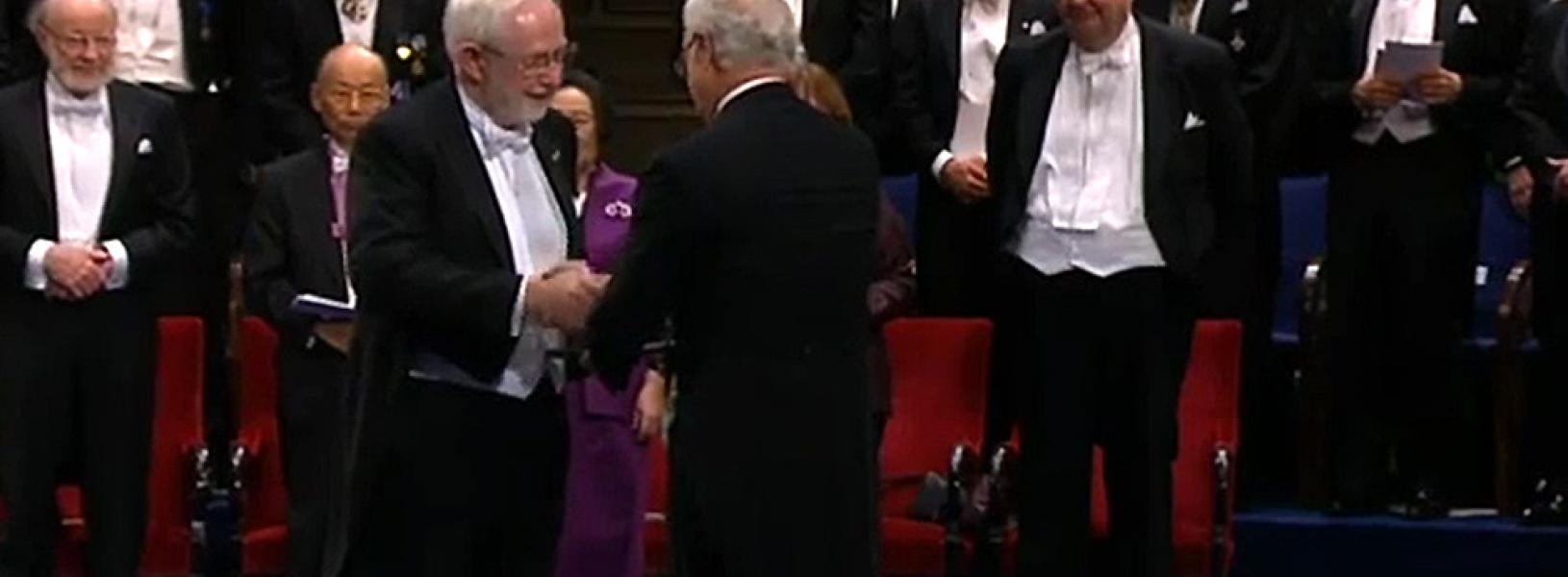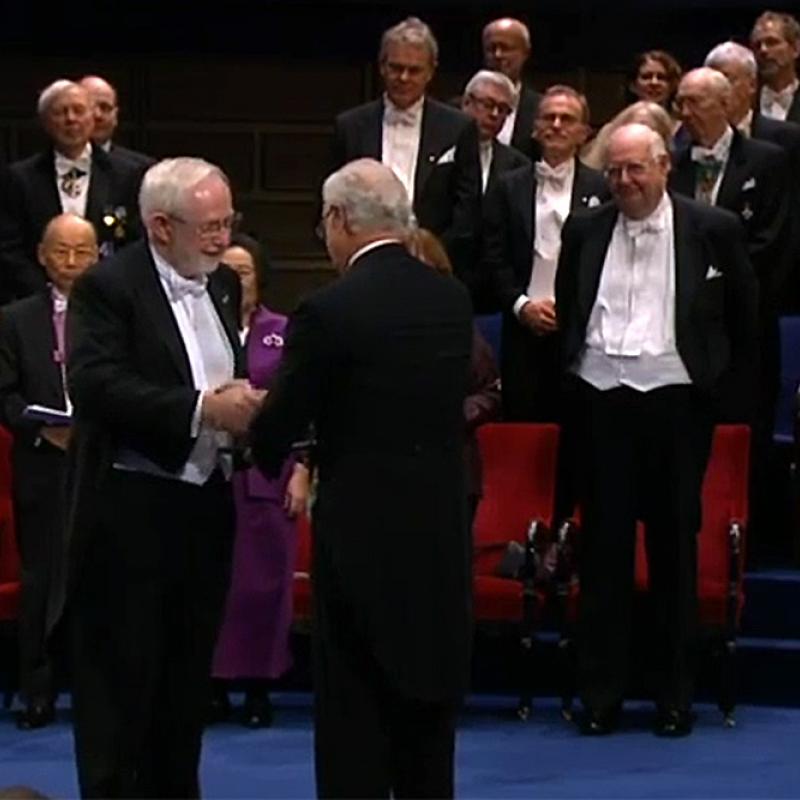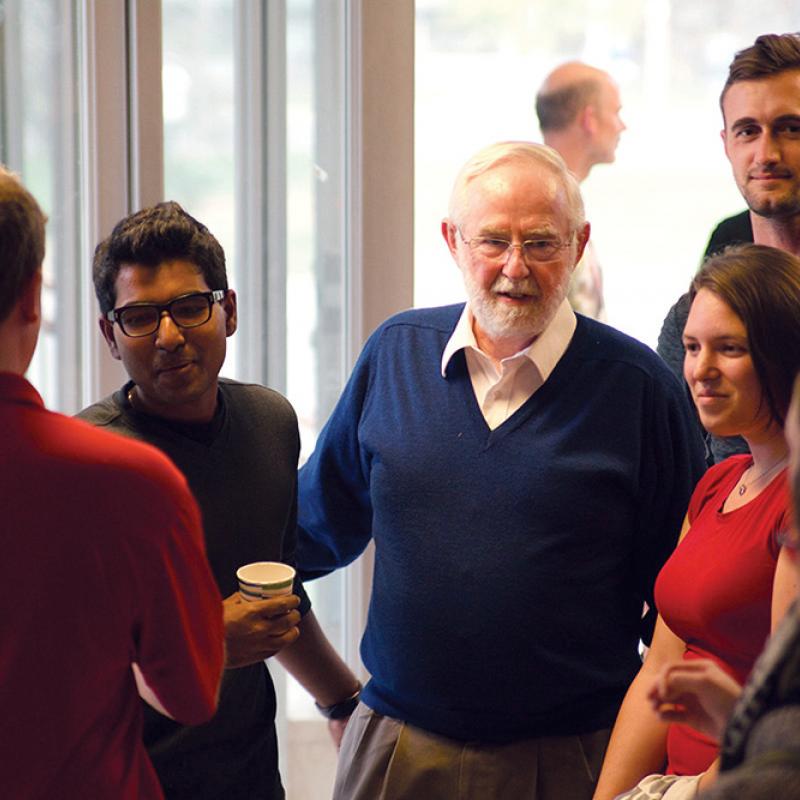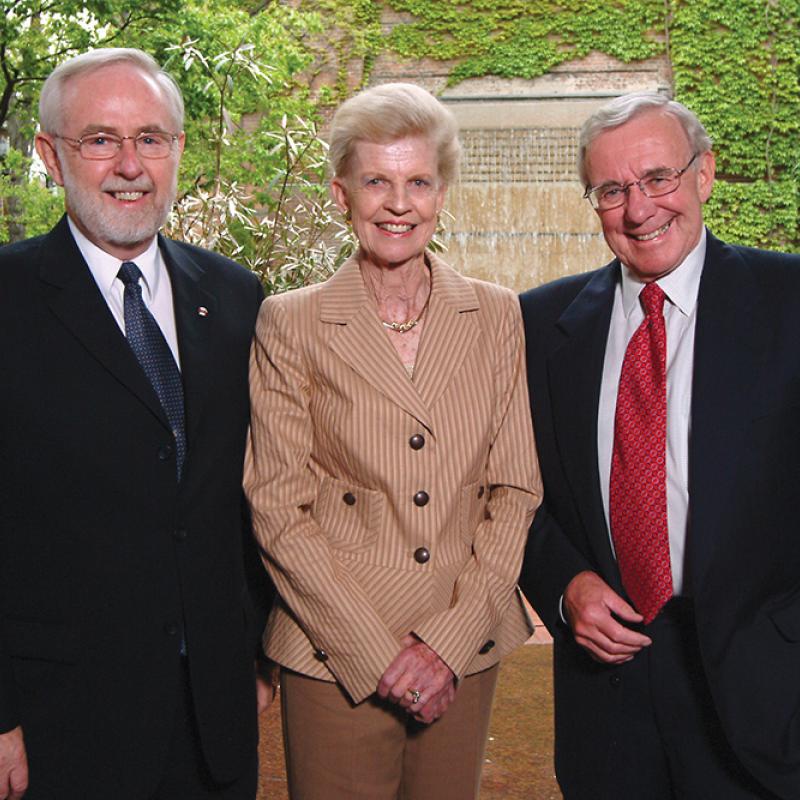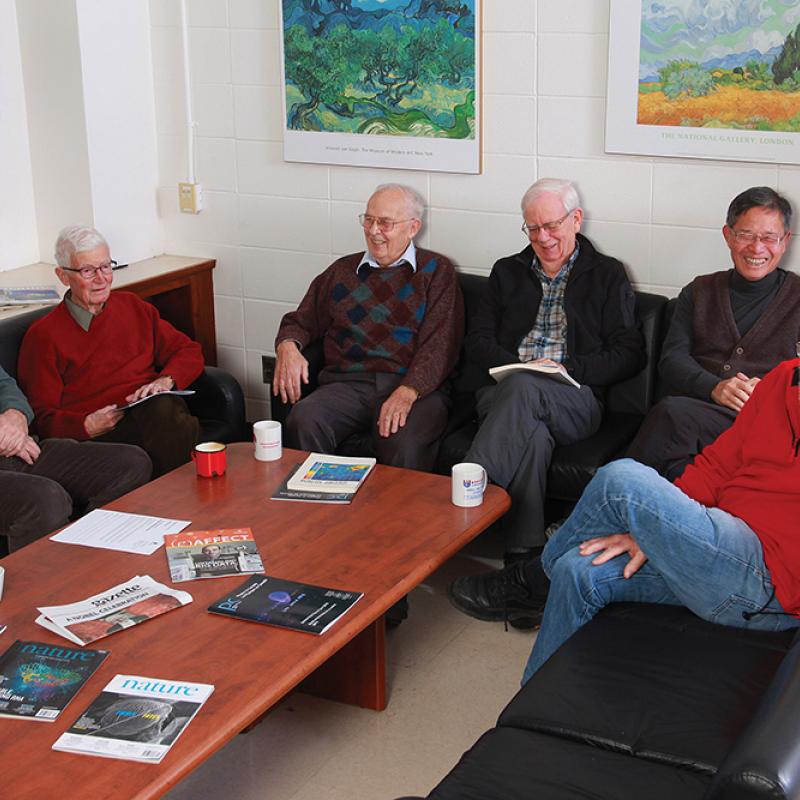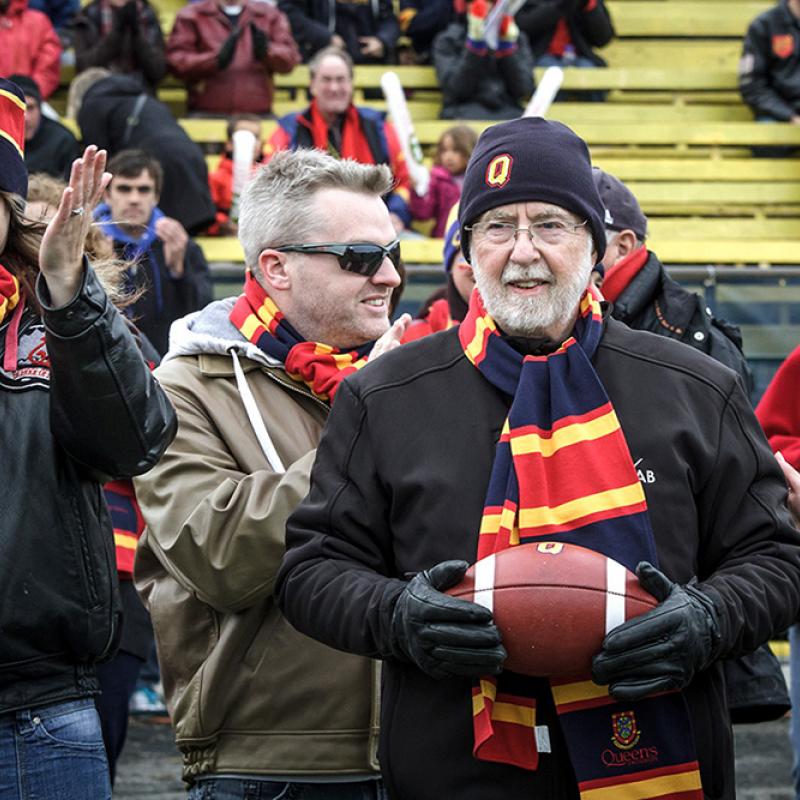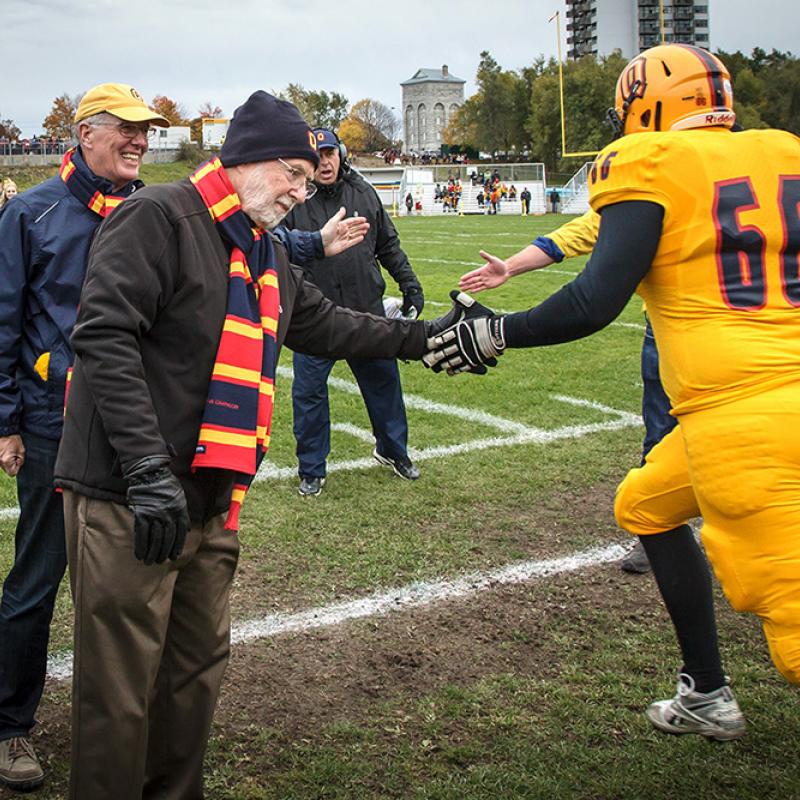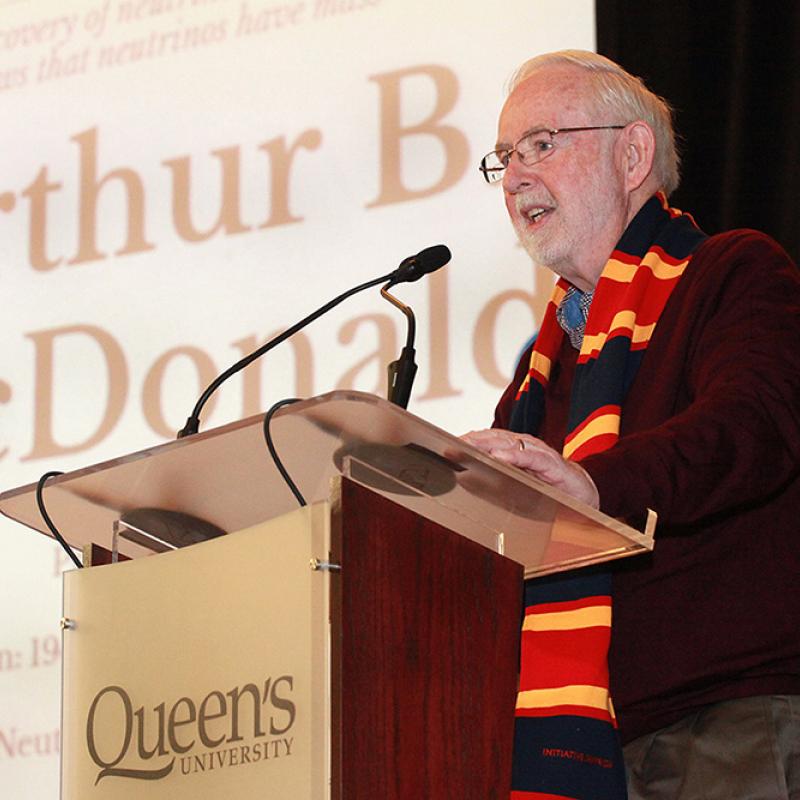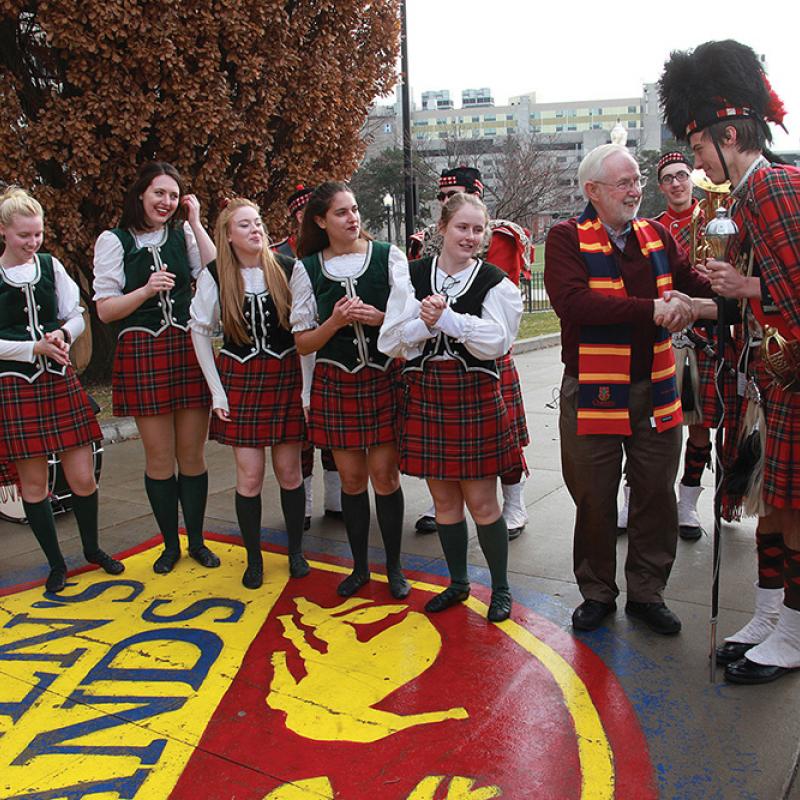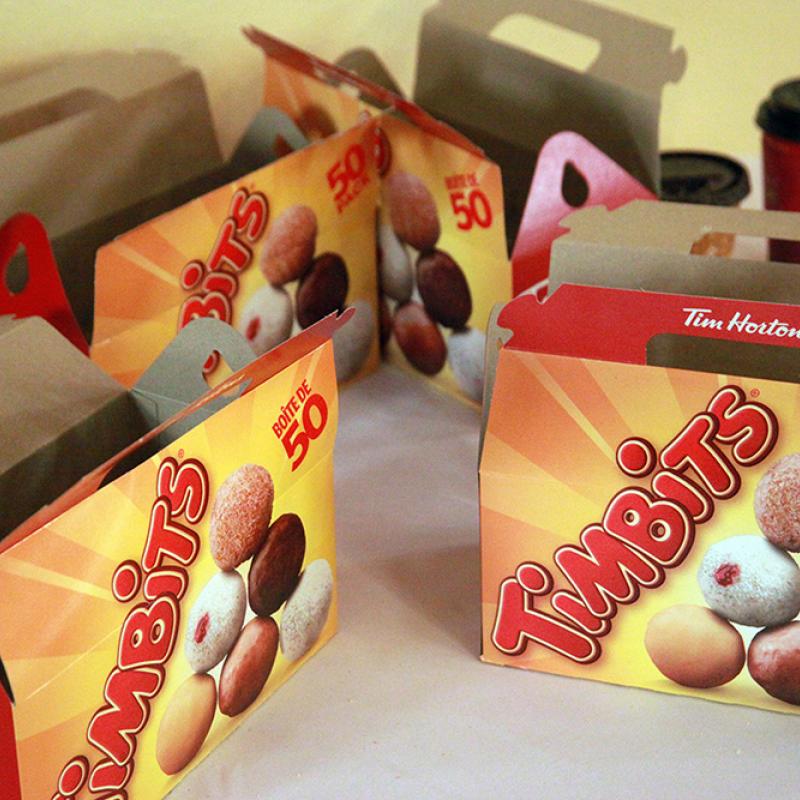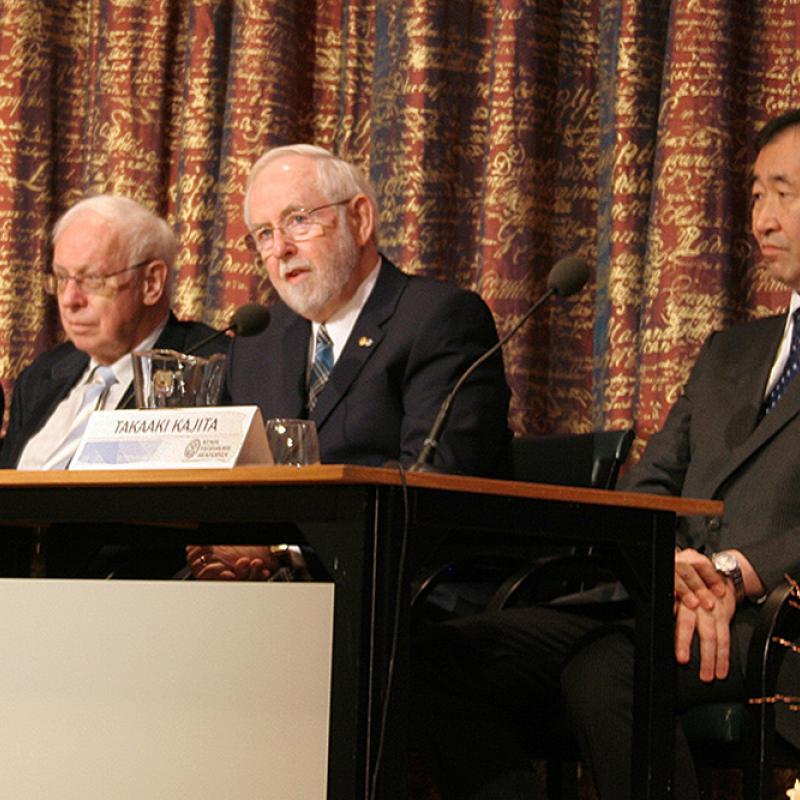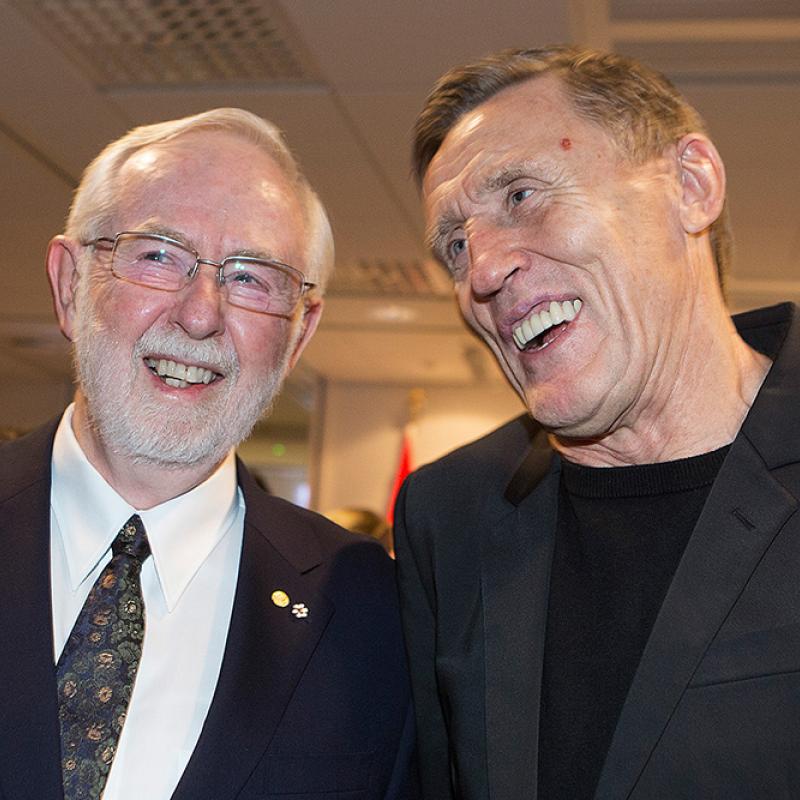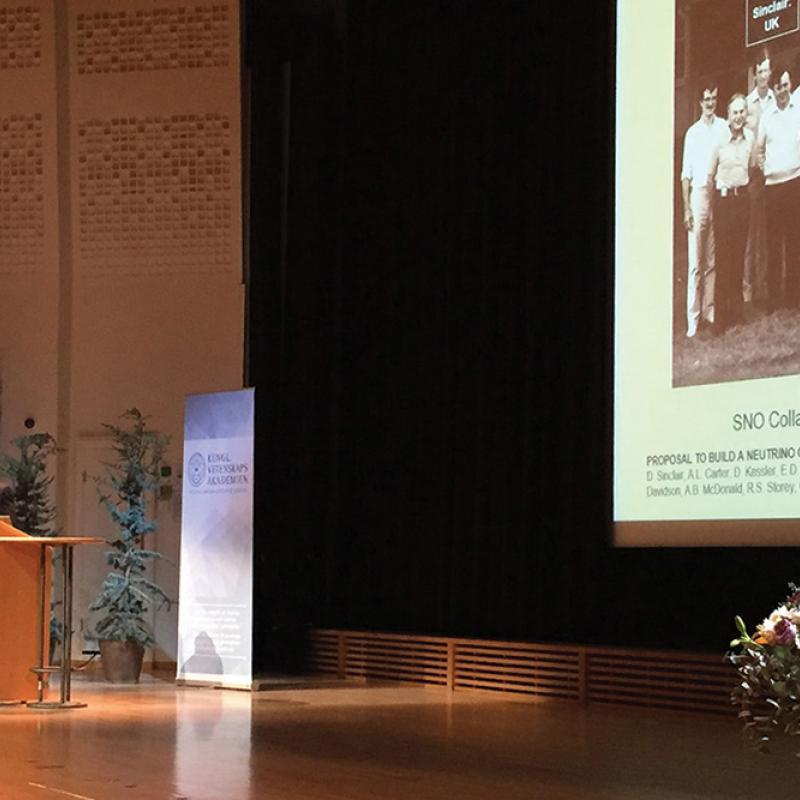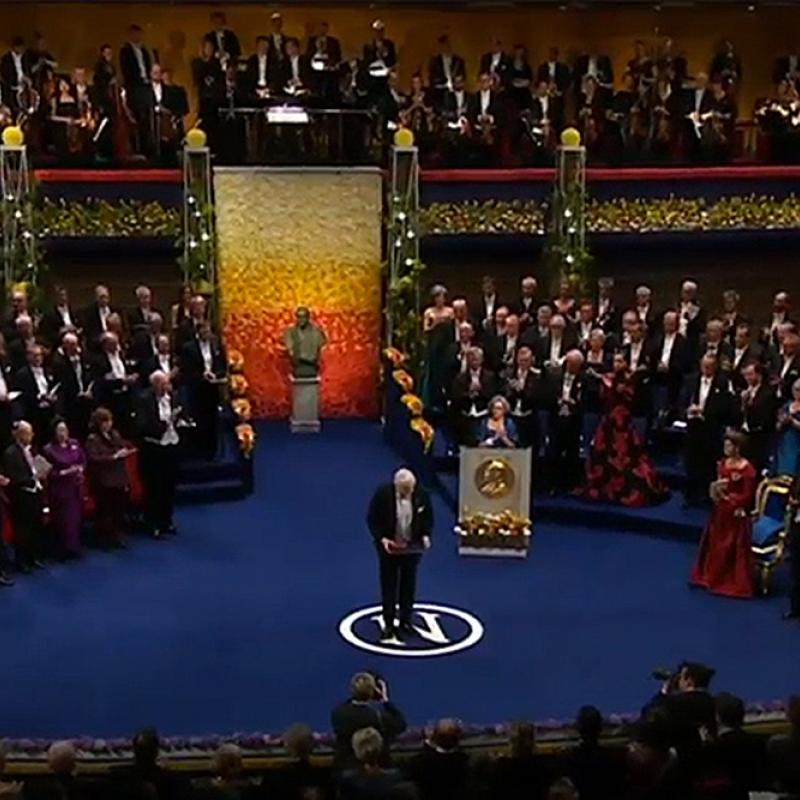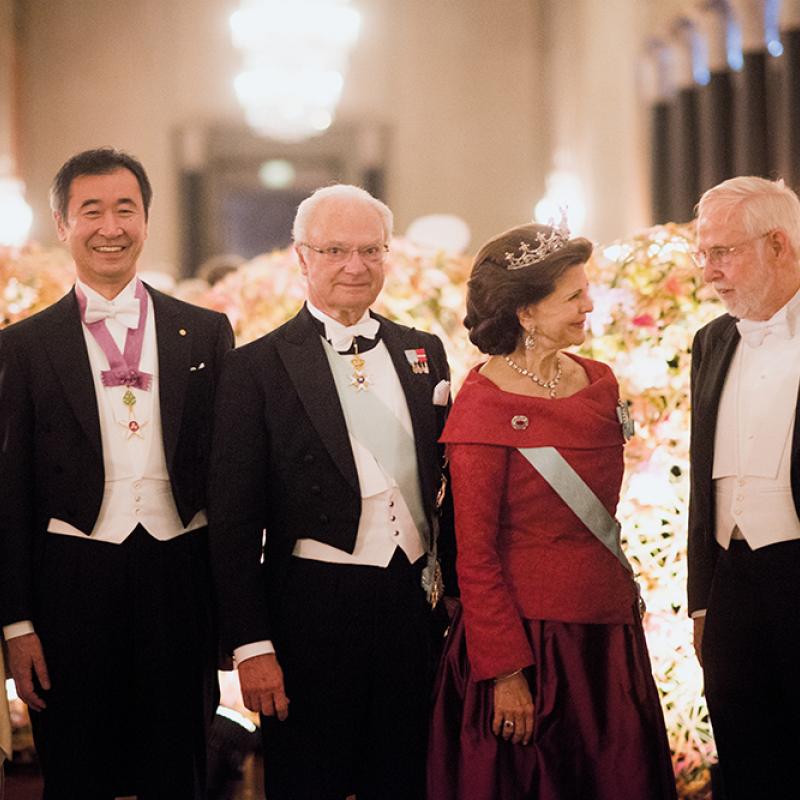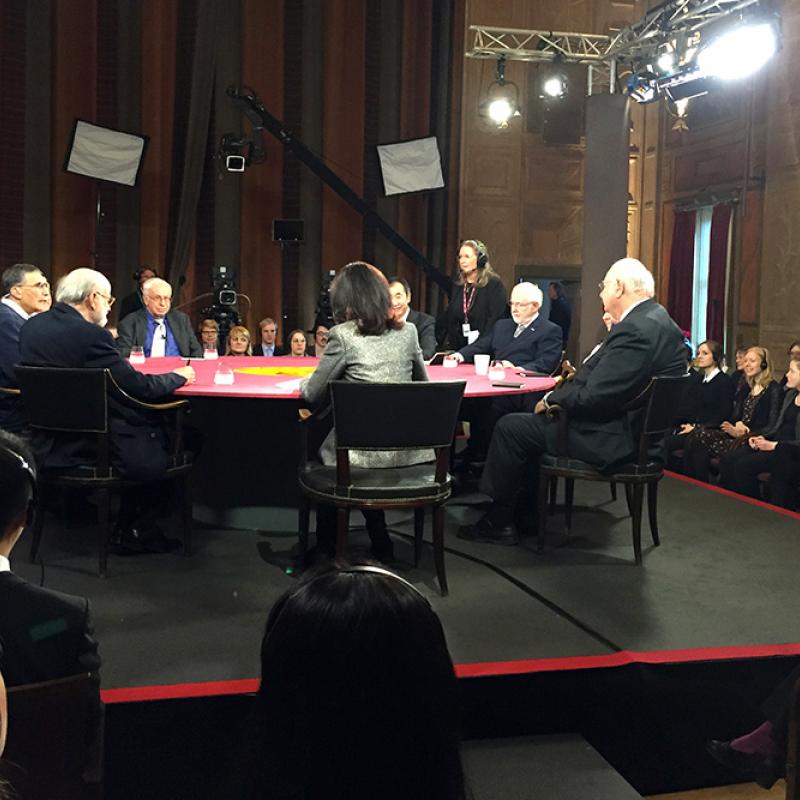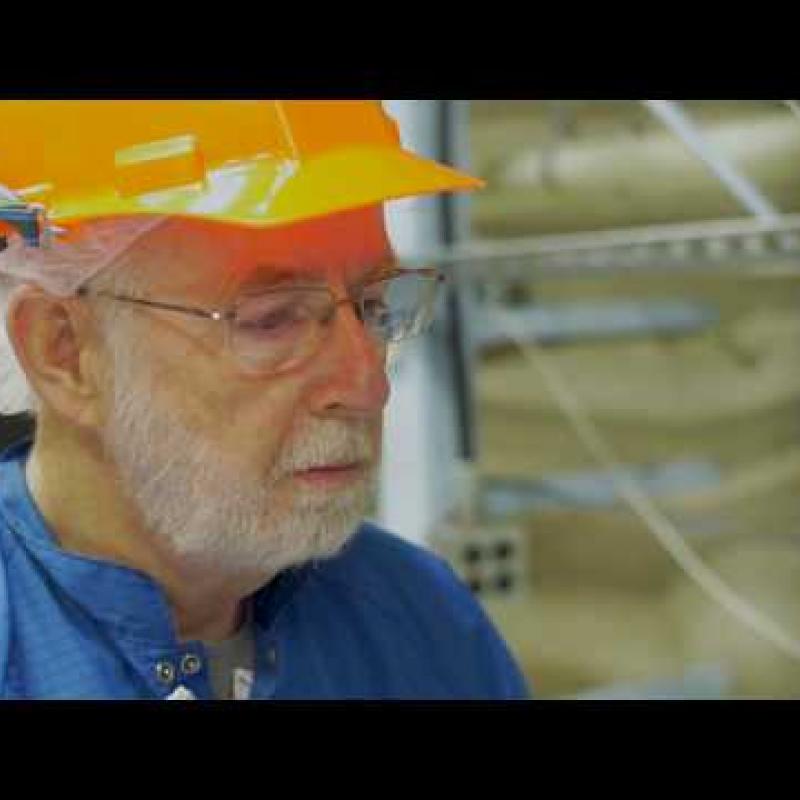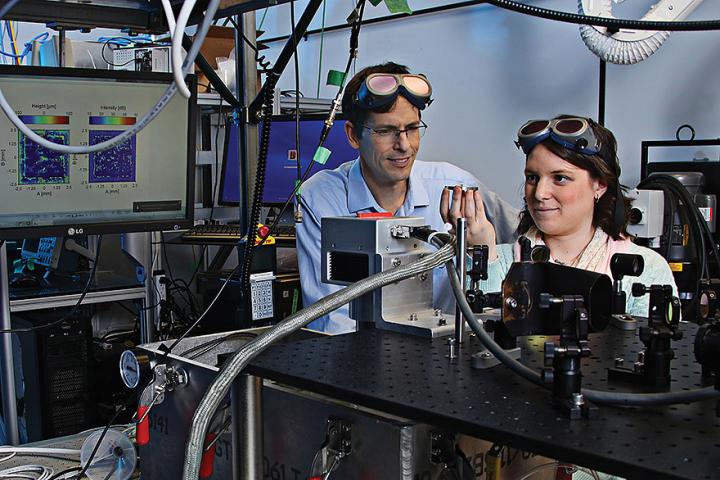October: It has been a whirlwind few months for Professor Emeritus Art McDonald. Following the Oct. 6 announcement of the Nobel Prize for Physics, the world’s attention focused on Dr. McDonald and his co-winner, Dr. Takaaki Kajita of the University of Tokyo.
October & November: Over the next weeks and months, Dr. McDonald’s work was covered by media around the world, from The New York Times to The Indian Awaaz.
Dr. McDonald also showed his lighter side in a clip for television’s This Hour Has 22 Minutes, during which he patiently demonstrated the notion of a neutrino changing flavours using an iconic Canadian donut, the Timbit.
In November, Dr. McDonald and the SNO Collaboration received another major award: the 2016 Breakthrough Prize in Fundamental Physics. The SNO Collaboration shared the $3-million prize with four other international experimental collaborations studying neutrino oscillations: the Superkamiokande, Kamland, T2K/K2K and Daya Bay scientific collaborations.
December: He also took the time to celebrate with the Queen’s community before he left for Sweden to accept his award. At the Queen's "Big Bang" send-off in Grant Hall, members of the Queen's community watched a congratulations video created by Studio Q, a Queen's AMS student-run creative agency. The video includes messages from colleagues from SNOLAB and Queen's, Governor General David Johnston, and Ted Hsu, former MP for Kingston & the Islands (and himself a Queen's physics grad.)
When Dr. McDonald formally received his Nobel medal from King Carl XVI Gustaf of Sweden in a ceremony at the Stockholm Concert Hall, back in Kingston, members of the Queen’s campus gathered in Stirling Hall to watch the ceremony.
While in Stockholm, Dr. McDonald took part in Nobel Minds 2015, a BBC roundtable discussion with his fellow Nobel laureates in science, economic sciences and literature.
January: In January, Dr. McDonald, an Officer of the Order of Canada since 2006, was promoted within the Order, to Companion.
